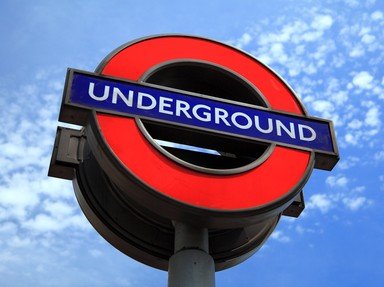Quiz Answer Key and Fun Facts
1. One of the most prominent and well preserved closed Tube stations is Aldwych, near the famous Royal Courts of Justice. The station opened in 1907 on a branch line from nearby Holborn station. However, low passenger numbers jeopardised the future of Aldwych Station as early as 1917. It was closed for good in 1994 - and only a lucky few have been inside since.
Bearing in mind that this was the only station on a branch line from Holborn, which London Underground line served Aldwych Station?
2. Unfortunately, not all former Tube stations remain so wonderfully intact: some simply have new uses, others have had their surface-level buildings demolished, and some have had all the evidence they ever existed removed.
One such station is King William Street. Opened in 1890, King William Street Station was served by the Northern line, and was the first 'deep level' station on the network. However, it failed to remain open for long: by February 1900, the station was closed. The surface building was demolished in 1930, although parts of its underground premises were used as air-raid shelters in World War 2. Today, there is no evidence it ever existed at ground level, and nothing can be seen from a passing train.
But why was King William Street Station, close to the present Monument Station, closed so soon after opening?
3. Some 'abandoned' stations have not altogether disappeared from use. Some names, such as Stockwell, Shepherd's Bush, and Aldgate East still appear on the Tube map today, but are not the original stations. Some stations are merely resited, the new station is called the same name, and the original station is demolished.
One other such station is Swiss Cottage. It opened as a Metropolitan line station in 1868, but due to increasing congestion a second Swiss Cottage station, on the Bakerloo line, was opened alongside it in 1939. They operated as one station until 1940, when the original Metropolitan line Swiss Cottage Station was closed due to wartime economising efforts, and eventually demolished.
Services continued at the new Swiss Cottage on the Bakerloo until 1979, when services transferred to which Underground line?
4. British Museum Station (1900-1933) closed when Central line platforms opened nearby at Holborn. Its surface building remained, however, until 1989, when it was demolished to make way for a new bank building. Like many other deep-level stations it was put to use as a wartime shelter, but the platforms were removed and little remains to be seen today.
It has always had a reputation for being haunted; some sources claim that a newspaper offered a reward for anyone willing to spend the night there, shortly before its closure. No-one took them up on their offer. What exactly was the station said to be haunted by?
5. The London Underground network once reached as far as Windsor, Aylesbury, Slough and Southend.
6. When going about London, keep your eyes peeled - there are still plenty of former Tube stations to be seen! Easily the most recognisable of these were designed by Leslie Green in the early 20th century, and have a distinctive ox-blood red glazed terracotta brick facade. Many stations of his design remain fully functioning, such as Russell Square Station. Three of the following Green stations are now defunct but can still be seen on the street, but one is still open - which one?
7. Occasionally, if you are lucky, you may catch a glimpse of an abandoned station as you pass by in a speeding train. They are not easy to spot in the darkness, but they are there if you know where to look. Travelling between Tottenham Court Road and Holborn on the Central line, you may see patches of dirty, graffiti-covered white tiles. Which former station have you just seen the remains of?
8. It may seem wasteful that so much space underground (and sometimes overground too) is left empty when a station reaches the end of its career. Some closed stations are put to other uses once they are no longer open as stations. Which of the following statements is incorrect about station 'reincarnations'?
9. Occasionally stations are built, or partially completed, and never open even for a day. North End Station is one such station. Construction began in 1903 as the Northern Line was extended beyond Hampstead. However, ecological concerns, as well as concerns over low nearby populations of train users, caused building to halt in 1906. The tunnels had been bored, the lift shafts sunk, and stairs built, but no platforms or surface building were in existence.
Though officially known as North End, it soon gained a nickname from London Underground staff after a nearby pub. What was the station known as?
10. Whilst complete station closures are relatively rare, station name changes have occurred frequently in Tube history. Hampstead, Archway, Barbican, and Arsenal stations are all example of stations previously known by other names. In some cases these former names are still visible in the platform tiling - Arsenal Station still very clearly says "Gillespie Road" on its platform walls.
Bond Street Station has always been known as such, but in 1909 a proposition to link it to a nearby department store via a subway and rename it after the store was made. Local opposition soon quashed the proposition, but if the plans had been followed through, what would Bond Street Station have been renamed?
Source: Author
crazy baby
This quiz was reviewed by FunTrivia editor
stedman before going online.
Any errors found in FunTrivia content are routinely corrected through our feedback system.

